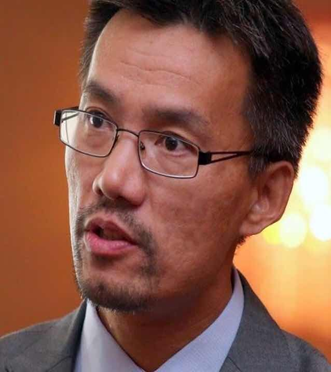【百家大讲堂】第199期: 瑞典电力工业:未来与挑战
来源: 发布日期:2019-05-21
【百家大讲堂】第199 期: 瑞典电力工业:未来与挑战
讲座题目: 瑞典电力工业:未来与挑战
报 告 人: Ou Tang
时 间: 2019年 月 日 午 : 0- : 0
地 点: 中关村校区主楼241室
主办单位:研究生院、管理与经济学院
报名方式:登录365体育官网理工大学微信企业号---第二课堂---课程报名中选择“【百家大讲堂】第199期: 瑞典电力工业:未来与挑战 ”
【主讲人简介】

Ou Tang现任瑞典林雪平大学生产经济学教授。Ou Tang教授从事于库存模型、制造计划和控制系统、闭环供应链、供应链风险管理、可持续供应链管理和中国相关运营管理问题的研究。发表学术论文100余篇,其中在《European Journal of Operational Research》、《Production and Operations Management》、《International Journal of Production Economics》等国际期刊发表论文60余篇。Ou Tang教授是国际期刊《International Journal of Production Economics》的区域主编,也是国际库存研究协会的前任主席。
主讲人简介(英文)
Ou Tang is Professor of Production Economics at Link?ping University, Sweden. His research includes inventory modelling, manufacturing planning and control systems, closed loop supply chains, supply chain risk management, sustainable supply chain management and China related operations management issues. He has published more than 100 scientific articles, including moren than 60 appearing in international journals such as the European Journal of Operational Research, International Journal of Production Economics, Production and Operations Management and others. He serves as the editor for the International Journal of Production Economics and is the past president of International Society of Inventory Research.
【讲座信息】
能源政策对可再生能源的投资和传统能源的退役有着至关重要的影响。瑞典的目标是扩大可再生电力生产,并随后减少二氧化碳排放。为了实现这一目标,瑞典能源署(Swedish Energy Agency)颁发了电力证书作为激励措施。 然而,价格问题以及可再生能源的间歇性可用性和未来燃料成本的不确定性将严重影响电力生产商的经济业绩。 只有在了解了这些因素的相互作用之后,我们才能确定公司的商业模式,以实现电力部门的可持续发展。因此,本报告首先旨在应用系统动力学方法来整合战略决策(如扩容/退役)和运营特征(如电力生产中的随机性和季节性因素)。该模型强调了电力行业重要因素之间复杂的非线性相互作用。另一方面,核电站的退役是一个漫长的过程,这主要是由于核电站的巨额投资以及由此产生的沉没成本。因此,从市场的角度来看,间歇性能源的增加意味着核能需要调查其他收入来源。随着对未来电动汽车市场的预期,以及对氢在其他应用领域的兴趣增加,生产氢已经成为一个潜在的收入来源,特别是在存在过剩电力的情况下。本报告的第二个目的是研究以瑞典核电为背景投资氢生产的可行性。研究结果表明,能源政策不应以孤立的方式引入,而是需要将可再生能源的激励措施与诸如核退役等其他决定结合起来。此外,该项研究还预测了未来电价的上涨,而在容量配置被水电、生物质能和风能改变并占据主导地位后,电价将更加波动。该研究为决策者和管理者提供了指导方针,以便为其业务以及整个电力部门的健康发展做出更明智的决策。
内容简介(英文)
Energy policy has a vital impact on the investment in renewables and on the decommissioning of traditional ones. Sweden aims to expand the renewable electricity production and subsequently to reduce CO2 emissions. To achieve this, the Swedish Energy Agency issues electricity certificates as an incentive. However, the price issues, together with the intermittent availability of renewable energy sources and the uncertainty of future fuel costs, will significantly affect the economic performance of the electricity producers. It is only after understanding the interaction of those factors that we can define companies’ business models for achieving a sustainable development in the electricity sector. This presentation thus first aims to apply a system dynamics approach to integrate both strategic decisions such as capacity expansion/decommission, and operational features such as randomness and seasonal factors in electricity production. The model highlights the complex and nonlinear interaction of important factors in the electricity sector. On the other hand, decommissioning nuclear power plants is a long process not least caused by the substantial investments and consequently sunk costs in the plants. Thus, from a market perspective the increase in intermittent power sources means that nuclear needs to investigate other revenue streams. As the expectation of the future electric vehicles market, as well as the increased interest in hydrogen for other applications, producing hydrogen has become a potential source of income, particularly when surplus electricity exists. The second aim of this presentation is studying the feasibility of investing in hydrogen production using Swedish nuclear power as a background.
The study results indicate that the energy policy should not be introduced in an isolated manner, but rather need to incorporate the incentives of renewables with other decisions such as nuclear decommission. Additionally, this study predicts an upcoming increase in electricity price, as well as a more volatile price after the capacity profile has been changed and dominated by hydro, biomass and wind. This study provides guidelines for policy makers and managers to make better-informed decisions for a healthy development of their businesses as well as of the entire electricity sector.
